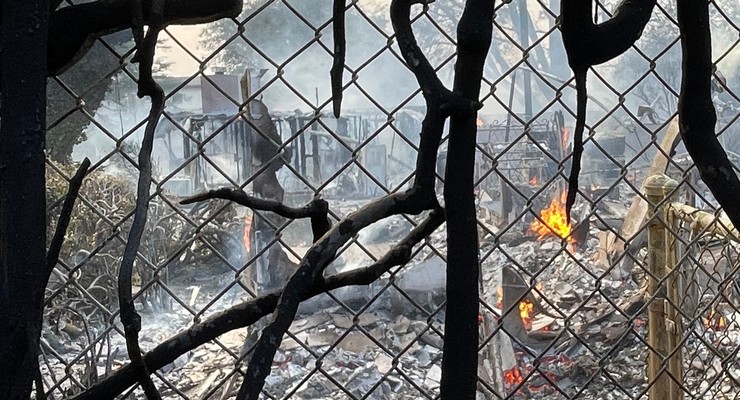
Researchers from the University of Colorado Boulder, using computer models developed with the Jet Propulsion Laboratory, NASA space imagery and ground-sensor data from the California Department of Water Resources in Sacramento, have come up with an estimate of how much water two recent powerful storms in the state have dumped on the Sierra Nevada range in January.
From the estimate, the researchers now say the storms, part of the “atmospheric river” weather patterns that pummeled the state from late December to late January, may have recouped 37 percent of California’s five-year snow-water deficit.
Snow-water deficit is the deficit in water stored in snowpack in the mountains now compared with the annual average water stored before the drought began in 2012.
On average, the state experienced a snow-water deficit of approximately 10.8-million acre feet per year during the drought years of 2012 through 2016. The total deficit over that five-year period is roughly 54 million acre feet. The recent storms appear to have reduced that total by roughly 37 percent in less than one month, the researchers say.
“Early in the January storm cycle, lower mountain elevations received some rain, but the vast majority of the mountain precipitation has come as snow – which is exactly the way we need this precipitation,” Thomas Painter, a snow scientist at JPL, and principal investigator of NASA’s Airborne Snow Observatory, said. “As snow, it releases to reservoirs and ecosystems more gradually and efficiently over the summer months.”
Noah Molotch, a JPL research scientist who heads the University of Colorado Boulder’s Center for Water Earth Science and Technology (CWEST) and leader of the study, cautioned that there is still a long way to go before California makes up its snow-water deficit completely.
“When the snow stopped falling five years ago, the state had to tap into its groundwater reserves to keep up,” Molotch said. “One snowy winter won’t be able to entirely reverse that, but there is, at least, some cautious optimism.”
Molotch also indicated that the recent storms also brought some flood risk although it did bring much-needed snow.
“The concern moving forward relates to what happens with the weather for the rest of the winter,” said Molotch. “Reservoirs across the Sierra foothills are now relatively full. If we get another intense atmospheric river with warmer air temperatures, that could lead to melting of the snowpack, and the risk for rain-induced flooding is considerable.”
David Rizzardo, chief of Snow Surveys and Water Supply Forecasting for the California Department of Water Resources, said the start of winter has been the best California has seen since 2011.
“It gives water managers hope for relief from what has been a historically dry five-year period,” Rizzardo said.
The Department will now use the JPL and CWEST data to fine-tune vital seasonal runoff estimates, used by water managers and reservoir operators across the state. Results of the most recent snow survey will be released on February 2, the Department said.














 0 comments
0 comments


